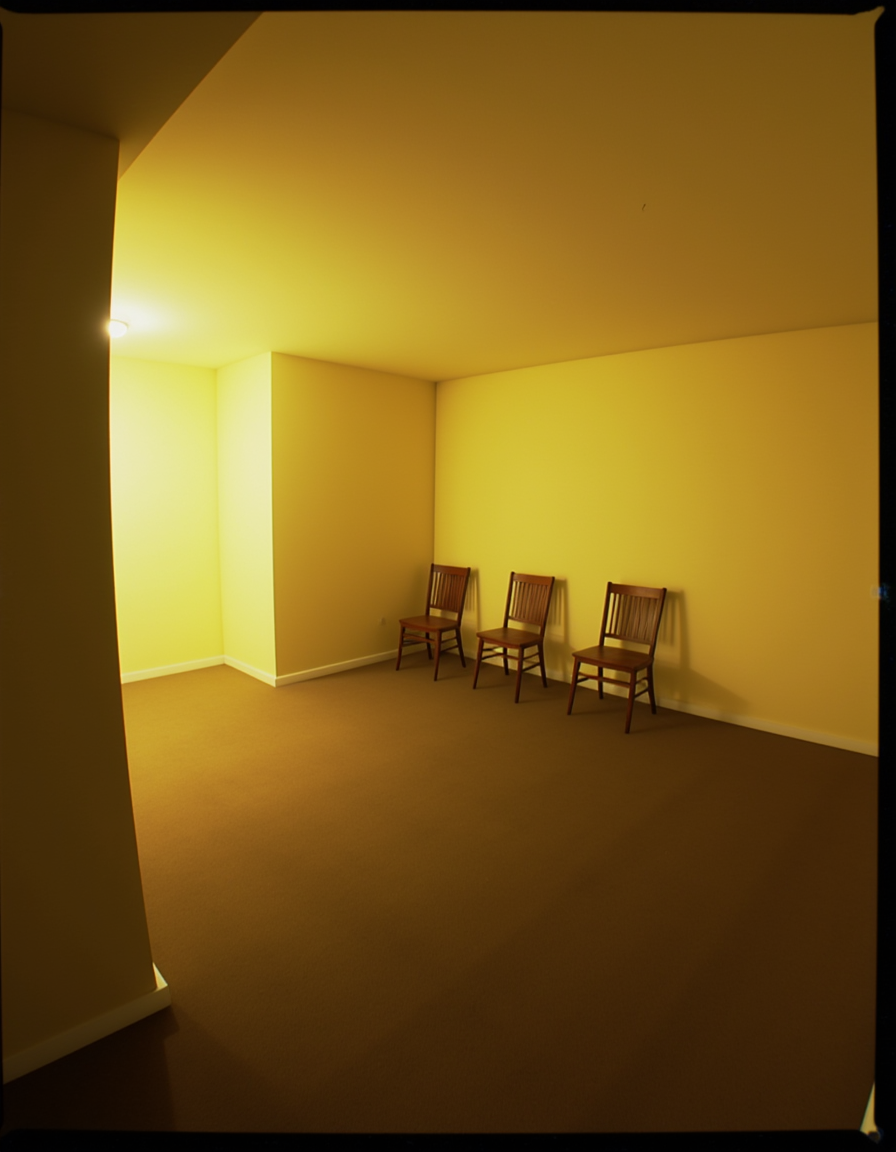(jurdn) (2024)
Image description: A sparsely furnished room with yellow walls and a brown carpeted floor. The room is illuminated by a single ceiling light in the corner. Three wooden chairs are arranged against one of the walls, giving a sense of isolation to the room.
Full Generation Parameters:
Large empty backrooms room. Warm incondescent light. VHS film grain and artifacting. Three wooden chairs near each other in the corner. The left side of the image shows the room has an angle with a corner.<lora:Backrooms.safetensors:0.64:1.0>
Negative prompt: Large empty backrooms room. Warm incondescent light. VHS film grain and artifacting. Three wooden chairs near each other in the corner. The left side of the image shows the room has an angle with a corner.
Steps: 32, CFG scale: 3.5, Sampler: Euler, Seed: 703574906426158, Size: 896x1152, Version: ComfyUI

It wasn't without extra effort and guidance though. Someone trained an adaptor on backrooms style liminal space images to get images with the right feel.
True, although at the same time, even most of the general AIs are quite good at it. I've tinkered with it a lot, and AIs are an amost perfect blend of knowledge of the aethetics of common human spaces, and a complete lack of consideration of their function or design. Things like subtly misaligned geometry, dark corners, and impractical layouts are all common and all fit the tone of Liminal/Uncanny imagery perfectly.
I'd love to see one of the "AI worlds" trained on games, trained on enviroments like this. It would be really cool to see.
I've read this kind of thing happens because unlike the subjects of images, backgrounds are almost never captioned, so the models have to work out depth and perspective on their own.